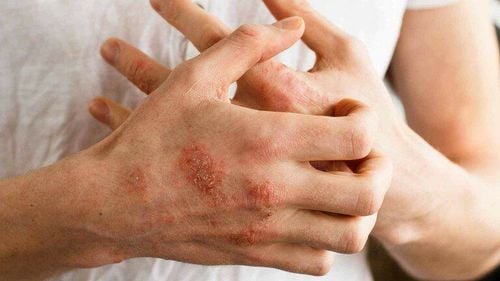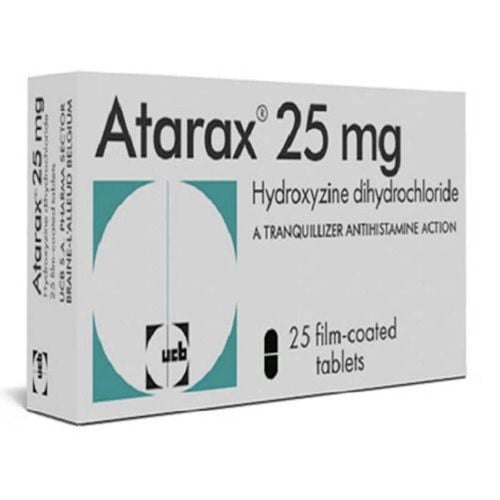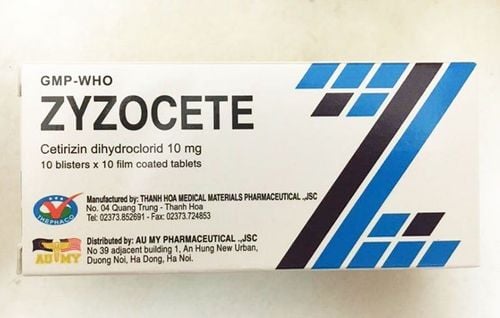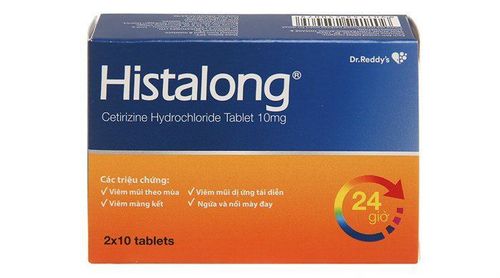This is an automatically translated article.
Vixlatin is a wise choice to effectively improve red eyes, runny nose, sneezing, ... of allergic rhinitis. At the same time, Vixlatin also reduces itching, the number of red spots caused by urticaria, atopic dermatitis. Vixlatin is intended for use in children over 12 years of age and adults.
1. What is Vixlatin?
Vixlatin is known to be an antiallergic drug used for cases of hypersensitivity. Vixlatin contains bilastin 20 mg and is available in the form of tablets. Bilastin contained in Vixlatin is an antihistamine anti-allergic agent, which inhibits the skin reactions caused by histamine.
Therefore, indications for use of Vixlatin:
Allergic Rhinitis: Treatment for symptoms such as sneezing, itchy nose, stuffy nose, runny nose, watery eyes, red eyes and other forms of allergic rhinitis. other. Diseases such as urticaria, atopic dermatitis: Vixlatin helps to reduce itching, lichenification, number and size of erythema nodules. When using Vixlatin, it is necessary to strictly follow the instructions written on the drug instruction leaflet or the doctor's prescription sheet.
2. Instructions on how to take Vixlatin
Usual dose:
Children <12 years old: There are currently no reports on the efficacy and safety of bilastin in Vixlatin for children under 12 years old, so it should not be used for this population. Children >12 years old and adults: Take 1 tablet (20mg)/time/day to treat allergic rhinitis and urticaria. Elderly: No dose adjustment is required in the elderly. Patients with renal impairment: For patients with mild renal impairment, no dose adjustment is required, however, in this subject, it is necessary to consult a doctor before use. Hepatic impairment: Vixlatin is not metabolised by the liver, but mainly excreted by the kidneys. Therefore, liver failure does not increase the concentration of Vixlatin in the blood, so no dose adjustment is required in patients with hepatic impairment. *Note:
The above dosage is for reference only, it is necessary to apply the exact dose of Vixlatin indicated on the drug package, drug instruction sheet or instructions of a doctor or pharmacist. Do not arbitrarily calculate, apply or change the dose. How to use: Take Vixlatin directly with clean water.
3. Some side effects of Vixlatin
According to clinical studies, side effects occurred in about 12-13% of patients studied.
Common side effects include dizziness, fatigue, headache. In addition, rare cases such as anxiety, insomnia, tinnitus, dizziness, dyspnea, right bundle branch block, sinus arrhythmia, prolongation of the QT interval on electrocardiogram, gastric irritation have also been reported. digestive disorders, gastritis, rashes. Usually, side effects or unwanted effects go away when the medication is stopped. If there are rare side effects that are not listed in the package insert for Vixlatin, you should tell your doctor or healthcare professional right away.
4. Notes when taking Vixlatin
Contraindicated in case:
Hypersensitivity to active ingredient bilastin and other ingredients in the drug. Precautions before taking Vixlatin:
Pregnant and lactating women: There is very little information and data on the effects of the drug on this subject. Nor have any relevant experiments been performed on animals. However, extreme caution should be exercised and consult your doctor before using Vixlatin. Before using the drug, it is necessary to be careful with the following subjects: the elderly, children under 15 years old, people with liver failure, kidney failure, ... or subjects with myasthenia gravis, hepatic coma, stomach ulcers.
5. Vixlantin drug interactions
Drugs that interact with Vixlatin:
Drugs containing the active ingredient Ketoconazole (antifungal): 2 times increase in AUC of bilastin, 2-3 times increase in Cmax. Drugs containing the active ingredient Erythromycin (a macrolide antibiotic): Similar to antifungal drugs, Erythromycin causes the AUC of bilastin to increase 2 times, the Cmax concentration by 2-3 times. Drugs containing the active ingredient Diltiazem (treatment of angina pectoris): Concomitant use can increase the Cmax of bilastin in the blood by 50%. If bilastin 20mg and Diltiazem 60mg are taken concurrently, bilastin Cmax will increase by 50%. Talk to your doctor if you are taking Cyclosporine, Ritonavir (for AIDS), or Rifampicin (an antibiotic used to treat tuberculosis and leprosy). Vixlatin drug interaction with food and drink:
Consider when using together with alcohol, tobacco, alcoholic beverages or fermentation. These agents can change the composition of Vixlatin. See details in the accompanying leaflet or consult your doctor or pharmacist for more details.
Please dial HOTLINE for more information or register for an appointment HERE. Download MyVinmec app to make appointments faster and to manage your bookings easily.













